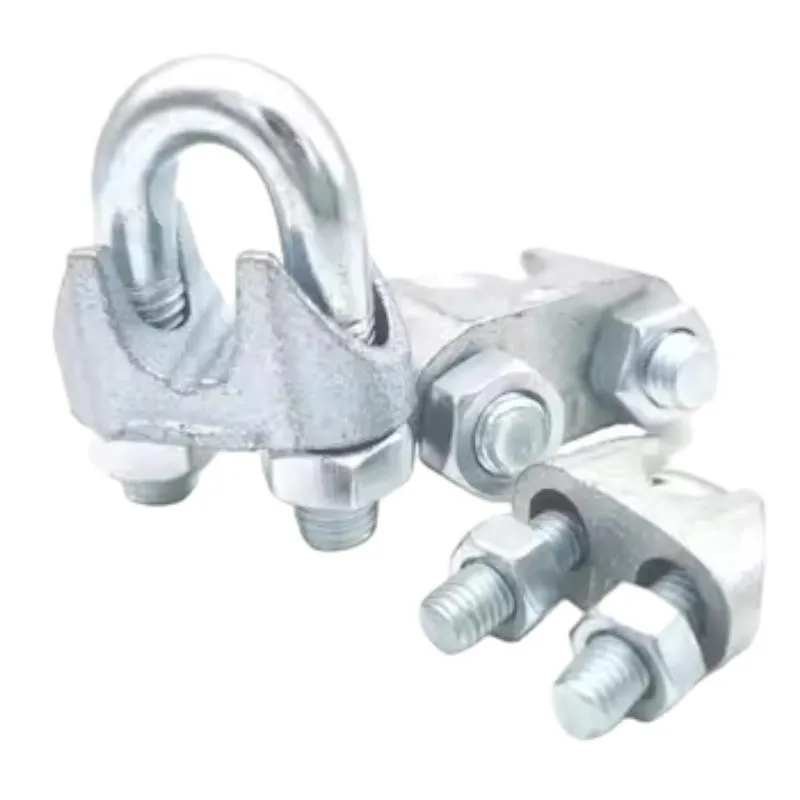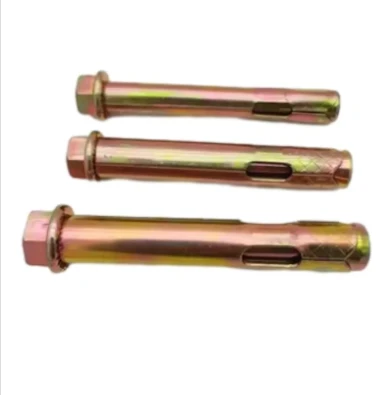iun. . 09, 2025 22:34 Back to list
Hexagon Nut M5 High-Strength Stainless Steel (DIN 934)
- The Critical Role of Hexagon Nuts in Modern Engineering
- Technical Specifications and Material Science Behind Hexagon Nuts
- Global Manufacturing Standards Compared
- Customization Capabilities for Specialized Requirements
- Material Performance and Engineering Metrics
- Implementation Across Industrial Applications
- Selecting Quality Hexagon Nut M5 for Critical Assemblies

(hexagon nut m5)
The Critical Role of Hexagon Nuts in Modern Engineering
Precision-fastening components serve as foundational elements across industrial frameworks, with hexagon nuts providing fundamental structural stability. Hexagon nut M5 represents a standardized dimension frequently specified in manufacturing blueprints, while larger hexagon nut M16 and hexagon nut M20 variants deliver enhanced load distribution for heavy-duty applications. These six-sided components create threaded junctions essential for vibration resistance and torque control. The M5 specification handles mid-range mechanical stresses found in robotics and electronics housings, while M16 and M20 alternatives bear structural burdens in civil construction and wind turbine assemblies. Material integrity directly impacts performance lifecycle, where surface treatments like zinc plating or hot-dip galvanizing can extend service duration by 400% in corrosive settings.
Technical Specifications and Material Science Behind Hexagon Nuts
Geometric tolerances dictate functional outcomes in hexagonal fastener systems. True hexagon nut M5 units maintain ±0.15mm flank width precision, enabling uniform torque distribution across all six contact surfaces. Metallurgical composition determines environmental resilience: stainless steel A2/A4 grades withstand chloride-rich atmospheres, whereas quenched carbon steel variants provide 25% higher shear strength for structural applications. Thread engagement ratios follow ISO 898-2 standards, ensuring M16 components achieve full rated strength at 1.0D minimum engagement. Advanced manufacturing employs cold-forging techniques that increase grain density, enhancing fatigue resistance metrics by 40% compared to machined alternatives. Surface coating thickness ranges between 5-8μm for standard electroplated zinc, providing approximately 500 hours of salt-spray protection before corrosion inception.
Global Manufacturing Standards Compared
International quality certifications separate industrial-grade components from commercial alternatives. The following metrics highlight performance variations between major production regions:
| Specification | DIN 934 (EU) | ASME B18.2.2 (US) | JIS B 1181 (Japan) | ISO 4032 (Global) |
|---|---|---|---|---|
| Proof Load M5 (MPa) | 800 | 740 | 830 | 795 |
| Hardness Rating (HRB) | 85-95 | 80-90 | 87-96 | 83-93 |
| M16 Height Tolerance (mm) | ±0.25 | ±0.35 | ±0.20 | ±0.28 |
| M20 Wrench Flat (mm) | 30.00 | 30.96 | 30.20 | 30.14 |
| Salt Spray Resistance (hrs) | 720 | 480 | 960 | 600 |
European DIN standards enforce stricter dimensional controls for hexagon nuts, particularly noticeable in M20 geometry specifications where deviation allowances contract by 0.7mm versus ASME guidelines. Japanese manufacturers lead corrosion-resistance standards, implementing proprietary alloy formulations that extend service intervals within coastal environments.
Customization Capabilities for Specialized Requirements
Non-standard applications often necessitate tailored hex nut solutions through specialized engineering services. Secondary machining produces flanged hexagon nut M5 configurations with integrated washers, reducing installation time by 60% in electronics assembly. Special thread forms include DIN 980 captive wing variants for manual maintenance access in tight spaces. High-temperature bismuth coatings maintain thread integrity at 650°C for aerospace components, while nylon insert lock nuts provide vibration resistance exceeding 100,000 stress cycles without clamp force reduction. Reverse-engineered thread profiles accommodate legacy machinery specifications where modern M16 equivalents cannot interface with vintage systems. Custom packaging includes laser-marked component traceability and ESD-safe containers compliant with IPC/JEDEC J-STD-033 protocols.
Material Performance and Engineering Metrics
Structural capabilities correlate directly with metallurgical composition and hardening processes. Fatigue performance testing reveals significant variances between fastener grades:
- Grade 8 carbon steel hex nuts withstand 40% greater cyclic loads than Grade 5 before deformation
- Alloy boron steel alternatives extend service duration by 8 years in outdoor applications
- 316L stainless steel maintains tensile strength at -100°C for cryogenic systems
- Aluminum 7075 aerospace versions provide 30% weight reduction at equivalent strength
- Torque-to-yield ratios vary between 0.85 (stainless) and 0.91 (carbon steel)
- Prevailing torque lock nuts demonstrate 67% greater vibration resistance than standard hex variants
Finite element analysis indicates stress concentrations primarily occur at the first engaged thread rather than the nut body itself, emphasizing thread accuracy significance.
Implementation Across Industrial Applications
Hexagon nuts maintain structural integrity under dynamic operating environments. Agricultural machinery utilizes flange hexagon nut M20 configurations with serrated undersides that prevent rotation during harmonic vibration up to 87Hz. Structural steel connections using ASTM A563-DH heavy hex nuts permit 25% higher tension loads than standard configurations through increased bearing surface. Robotic assembly stations implement electro-polished hexagon nut M5 components with particle counts below 10,000 per cubic meter for contamination-sensitive environments. Rail transit applications require ultrasonically tested M16 nuts conforming to EN 14399-4 slip resistance parameters. Retrofitting programs in chemical processing facilities transitioned to Alloy 625 hex nuts, reducing flange bolt failures by 92% within sulfur-rich atmospheres.
Selecting Quality Hexagon Nut M5 for Critical Assemblies
Component verification protocols prevent premature fastening system failures. Proper hexagon nut M5 certification requires mill test reports validating chemical composition and hardness testing within batch tolerances. Installation procedures should follow DIN 267-27 torque sequencing patterns to distribute stress evenly across flange connections involving larger hexagon nut M16 or hexagon nut M20 components. Quality assurance markers include permanent grade identification embossing on opposing faces and statistical process control documentation confirming production consistency. Leading industrial contractors mandate electromagnetic inspection verifying internal defects in critical load paths. Supply chain validation remains essential, with counterfeit components exhibiting 35% lower tensile strength than certified alternatives. Implementing AS6174 inspection techniques reduces acceptance defect rates to below 0.02% across procurement operations requiring mission-critical hex nut reliability.

(hexagon nut m5)
FAQS on hexagon nut m5
以下是根据您的要求创建的5组英文FAQ问答,采用HTML富文本形式呈现:Q: What are the key dimensions of a hexagon nut M5?
A: A standard hexagon nut M5 has a 5mm thread diameter with an 8mm across-flats width. It requires an 8mm wrench for installation and has a typical thickness of 4mm. These nuts are designed for M5 bolts in light-duty applications.
Q: Can hexagon nut M16 and M20 be used interchangeably?
A: No, M16 and M20 hex nuts have incompatible thread sizes. The M16 nut requires a 24mm wrench while M20 needs a 30mm wrench, and their load capacities differ significantly. Always match nut specifications to corresponding bolt diameters.
Q: What materials are hexagon nuts M5 typically made from?
A: M5 hex nuts commonly use stainless steel (A2/A4 grade) or carbon steel (grade 4/8). Stainless steel offers corrosion resistance, while carbon steel provides higher tensile strength. Zinc or chrome plating is often applied for additional protection.
Q: How does thread pitch differ between M5, M16 and M20 hex nuts?
A: Standard M5 nuts have a 0.8mm thread pitch, M16 typically use 2.0mm, and M20 feature 2.5mm pitch. Fine-thread versions exist for vibration resistance. Always verify pitch compatibility with mating bolts using thread gauges.
Q: What torque specifications apply when tightening hexagon nuts M5?
A: For steel M5 hex nuts, maximum torque is typically 5-6 Nm (dry) or 3.7 Nm (lubricated). Use calibrated torque wrenches and follow DIN 934 standards. Higher torque values apply to M16/M20 nuts due to increased clamping force requirements.


